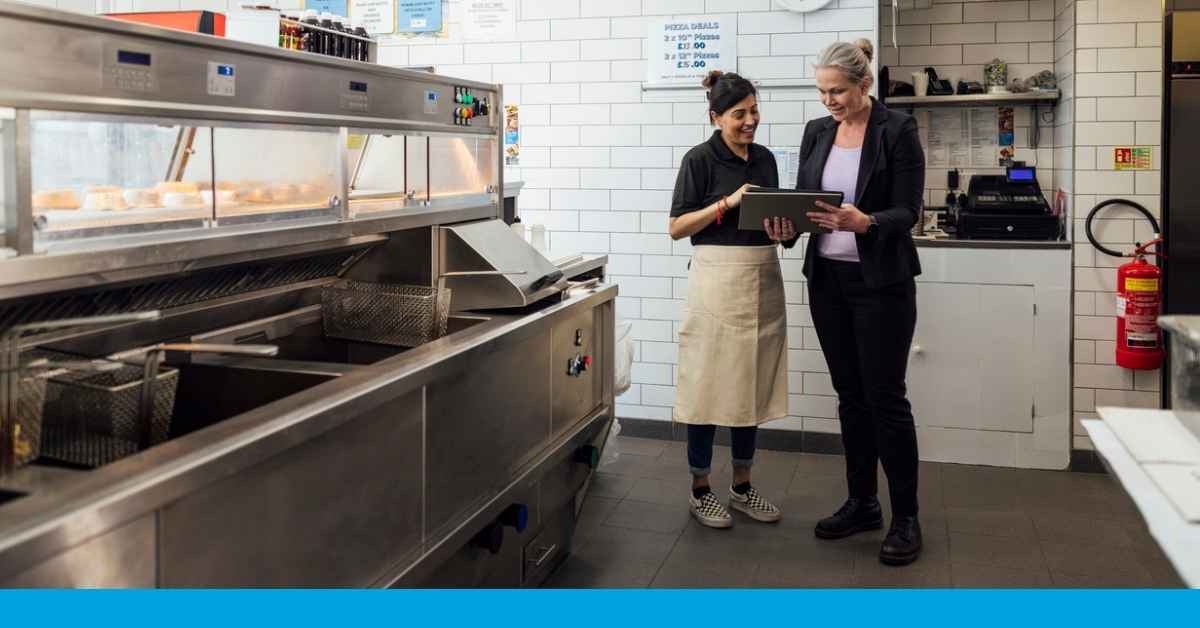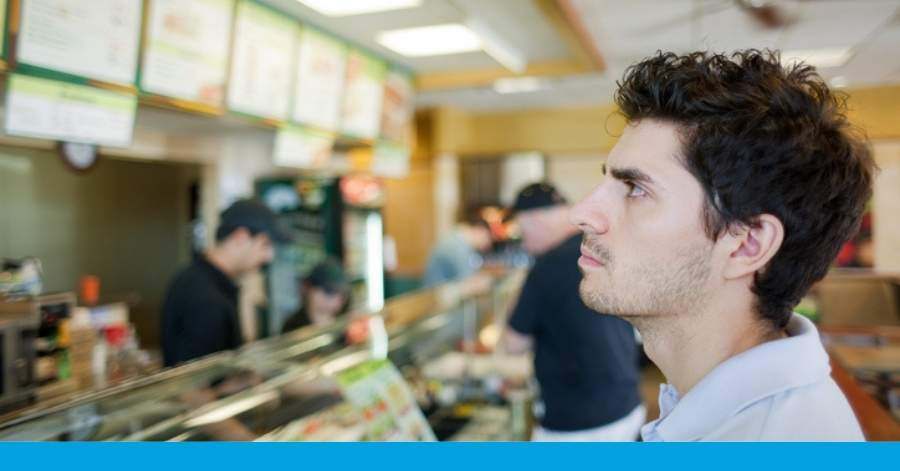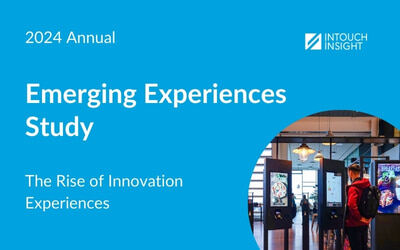QSR Guest Experiences: Insight Into Tech’s Impact [Latest Data]
When it comes to quick-serve restaurants (QSR), one thing is clear: customers crave speed, convenience, and good food. But with an overwhelming...

From reducing costs to improving customer retention, efficient restaurant operations can significantly impact profitability.
Whether optimizing kitchen layout, embracing self-service kiosks, or enabling online ordering, restaurants can streamline workflows, provide better service, and ultimately enhance the overall guest experience.
In this post, we'll explore strategies to boost efficiency in your restaurant, making both front-of-house and back-of-house operations run smoother.
Ready to dive in? Here are the five strategies for improving restaurant efficiency.
Efficient ordering is the backbone of a successful restaurant operation, and streamlining this process can drastically reduce wait times while enhancing the overall guest experience.
The faster and more accurately orders are taken, the quicker they can be prepared and served, leading to higher satisfaction.
Digital ordering systems have transformed the way restaurants handle orders. Self-service kiosks, mobile apps, and online ordering platforms are not only convenient for customers but also reduce the potential for human error.
These systems allow guests to place their orders at their own pace, customizing their meals to their exact preferences. In turn, restaurants benefit from improved order accuracy, faster service, and less strain on front-of-house staff.
The benefits go beyond speed. According to our 2024 Emerging Experiences Study, customers reported higher satisfaction when using self-service kiosks compared to ordering at the counter. Additionally, kiosk orders had 5% higher accuracy, reaching an impressive 97%.
For restaurants, this means fewer returns to the kitchen, less wasted food, and reduced friction between guests and staff. Digital ordering also integrates smoothly with point-of-sale (POS) and kitchen display systems (KDS), allowing for a more efficient communication flow between the front and back of the house.
As customer preferences continue to shift towards convenience, offering contactless experiences has become a key strategy for improving restaurant efficiency and enhancing guest experience.
Our QSR Tech Perception Survey revealed that over 65% of 18–24-year-olds and 57% of 25–34-year-olds consider a contactless experience important. The survey had a sample size of 1,483.
By providing seamless delivery options, curbside pickup, and low-contact solutions for order pickup, restaurants can streamline operations while meeting the demands of modern customers.
Our 2024 Emerging Experiences Study found that when customers used a walk-up window or food locker for order pickup, the streamlined process led to a 9% increase in satisfaction with the pickup experience.
Not to mention these solutions also enhance operational efficiency by reducing the strain on staff. With fewer touchpoints in the ordering and pickup, employees can focus on preparing food and managing in-house guests, improving overall service speed and quality.
By adopting advanced technology and optimizing kitchen layouts, restaurants can improve communication, reduce bottlenecks, and speed up meal preparation, resulting in faster service and happier customers.
One of the most effective ways to improve kitchen operations is by incorporating automated technology, such as a Kitchen Display System (KDS), to streamline the communication between the front and back of the house.
When servers input orders into the POS system, the KDS instantly routes them to the appropriate kitchen stations. This minimizes errors, prioritizes orders effectively, and allows kitchen staff to focus on food preparation without interruptions.
In addition to technology, implementing internal checklists and inspections ensures employees consistently follow standard operating procedures. Leveraging digital checklists and inspection software not only reduces recurring errors but also fosters a culture of accountability and simplifies operational management.
For businesses with multiple locations, rolling out standardized SOP checklists can drive efficiency across all sites. Features such as Tags allow you to categorize questions, generate detailed reports, and identify both positive trends and areas for improvement. This proactive approach helps seize opportunities and resolve potential issues before they escalate into larger problems.
Read more about the benefits of using digital checklists and inspection software in a restaurant here.
While technology plays a vital role, the design of a kitchen significantly impacts the food preparation workflow. A well-designed layout should support the natural movements of staff and facilitate seamless cooking processes.
A case in point is Wendy’s, which recently announced the development of a Global Next Gen High-Capacity Kitchen designed for restaurants with high customer demand. This new kitchen model is expected to boost kitchen capacity by 50% compared to standard designs.
Key features include a dual-sided kitchen, extra sandwich prep areas, dedicated space for digital orders, and expanded prep space. These upgrades help reduce the distance crew members need to move in the back of the house, increase storage capacity, and improve overall operational flow.
Read more about the performance of Wendy’s Global Next Gen in our 2024 Emerging Experiences Study.
By investing in tech solutions for both drive-thru and in-house ordering, restaurants can improve efficiency while boosting guest satisfaction.
For example, upgrading drive-thru communication systems—like installing high-quality speakers —ensures clearer and faster interactions between staff and guests. These improvements help reduce order errors and speed up service times.
Data from the 2024 Drive-Thru Study showed that ensuring the speaker volume is loud enough to be easily heard can make a big difference in order speed. According to it, orders were:
Another powerful tech enhancement is the use of portable ordering systems. These handheld devices allow staff to take orders and process payments directly at the customer’s table or car.
In drive-thrus, this technology enables staff to walk up to vehicles and start taking orders before the customer reaches the menu board, further speeding up the process.
Chick-fil-A is a great example of a brand that uses portable ordering tablets in their drive-thru lines to speed up service. Employees take orders and payments directly from guests waiting in line, helping to reduce wait times and streamline the ordering process.
When employees feel supported and appreciated, they are more likely to be engaged in their work.
Year over year, our studies show that there is a direct correlation between friendliness and employee satisfaction. When employees are happy and engaged, their enthusiasm often manifests in more friendly service, which resonates with customers.
The employee experience also impacts important metrics. According to our 2024 Drive-Thru Study, when service was perceived as friendly:
Finally, investing in employee experience is not just a feel-good strategy; it is a smart business decision. The resulting increase in employee morale and motivation can lead to higher retention rates, reducing the costs associated with turnover and training new staff.
You’ve probably heard many times, "What gets measured gets improved." In the restaurant business, it’s really important to have ways to check if your efforts to boost efficiency are working.
By getting the right insights, you can make smart decisions that help your restaurant get better over time. Here are some effective ways to do that:
Encouraging guests to share their experiences is one of the most effective ways to gain insights into your restaurant’s performance.
Implementing customer feedback mechanisms, such as customer feedback surveys and mystery shopping programs, can provide valuable data on various aspects of the dining experience, including service speed, food quality, and overall satisfaction.
Collecting feedback is only the first step; acting on it is where the real transformation happens. Analyzing the data received from customers allows restaurants to identify trends and pinpoint areas needing improvement.
For example, if feedback consistently highlights long wait times or order inaccuracies, management can take action by rolling out digital checklists across sites to address these issues. This way you can automatically update stakeholders about the progress and monitor issues over time.
Establishing a culture of continuous improvement is vital for long-term success. Regularly measuring and reviewing performance metrics, alongside customer feedback, allows restaurants to adapt their strategies as needed.
By fostering an environment where feedback is valued and acted upon, restaurants can create a responsive operation that evolves with customer expectations and market trends.
By streamlining processes, upgrading technology, and investing in both your employees and customer feedback systems, you can create a more efficient operation that not only reduces costs but also keeps guests coming back.
Ready to take the next step? We can help you gain the insights you need to enhance your restaurant’s efficiency.
![QSR Guest Experiences: Insight Into Tech’s Impact [Latest Data]](https://www.intouchinsight.com/hubfs/website/intouch-insight/blog/qsr-guest-experiences.jpg)
When it comes to quick-serve restaurants (QSR), one thing is clear: customers crave speed, convenience, and good food. But with an overwhelming...

Imagine this: Peter is hungry and in a hurry for something satisfying to eat. He pulls into a drive-thru, but the menu is cluttered, the line is...

The Quick-Service Restaurant (QSR) industry is constantly evolving. Among all the trends influencing how restaurants operate, digital ordering cannot...